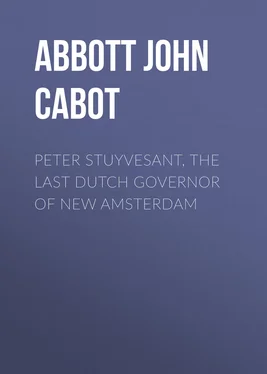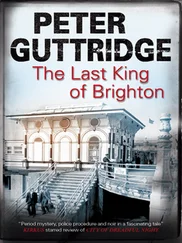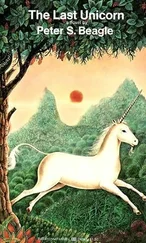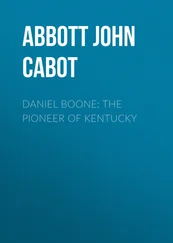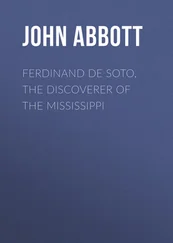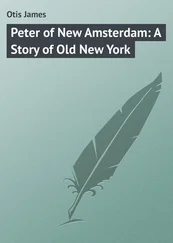John Abbott - Peter Stuyvesant, the Last Dutch Governor of New Amsterdam
Здесь есть возможность читать онлайн «John Abbott - Peter Stuyvesant, the Last Dutch Governor of New Amsterdam» — ознакомительный отрывок электронной книги совершенно бесплатно, а после прочтения отрывка купить полную версию. В некоторых случаях можно слушать аудио, скачать через торрент в формате fb2 и присутствует краткое содержание. Жанр: foreign_prose, История, foreign_edu, foreign_antique, на английском языке. Описание произведения, (предисловие) а так же отзывы посетителей доступны на портале библиотеки ЛибКат.
- Название:Peter Stuyvesant, the Last Dutch Governor of New Amsterdam
- Автор:
- Жанр:
- Год:неизвестен
- ISBN:нет данных
- Рейтинг книги:3 / 5. Голосов: 1
-
Избранное:Добавить в избранное
- Отзывы:
-
Ваша оценка:
- 60
- 1
- 2
- 3
- 4
- 5
Peter Stuyvesant, the Last Dutch Governor of New Amsterdam: краткое содержание, описание и аннотация
Предлагаем к чтению аннотацию, описание, краткое содержание или предисловие (зависит от того, что написал сам автор книги «Peter Stuyvesant, the Last Dutch Governor of New Amsterdam»). Если вы не нашли необходимую информацию о книге — напишите в комментариях, мы постараемся отыскать её.
Peter Stuyvesant, the Last Dutch Governor of New Amsterdam — читать онлайн ознакомительный отрывок
Ниже представлен текст книги, разбитый по страницам. Система сохранения места последней прочитанной страницы, позволяет с удобством читать онлайн бесплатно книгу «Peter Stuyvesant, the Last Dutch Governor of New Amsterdam», без необходимости каждый раз заново искать на чём Вы остановились. Поставьте закладку, и сможете в любой момент перейти на страницу, на которой закончили чтение.
Интервал:
Закладка:
Intelligence was promptly transmitted to Holland of these discoveries and the United Company, under whose auspices the discoveries had been made, adopted vigorous measures to secure, from the States-General, the exclusive right to trade with the natives of those wide realms. A very emphatic ordinance was passed, granting this request, on the 27th of March, 1614.
This ordinance stimulated to a high degree the spirit of commercial enterprise. The province was called New Netherland, and embraced the territory within the 40th and 45th degrees of north latitude. All persons, excepting the United "New Netherland Company," were prohibited from trading within those limits, under penalty of the confiscation of both vessels and cargoes, and also a fine of fifty thousand Dutch ducats.
The Company immediately erected a trading-house, at the head of navigation of the Hudson river, which as we have mentioned, was then called Prince Maurice's River. This house was on an island, called Castle Island, a little below the present city of Albany, and was thirty-six feet long and twenty-six feet wide, and was strongly built of logs. As protection from European buccaneers rather than from the friendly Indians, it was surrounded by a strong stockade, fifty feet square. This was encircled by a moat eighteen feet wide. The whole was defended by several cannon and was garrisoned by twelve soldiers.
This port, far away in the loneliness of the wilderness, was called Fort Nassau. Jacob Elkins was placed in command. Now that the majestic Hudson is whitened with the sails of every variety of vessels and barges, while steamers go rushing by, swarming with multitudes, which can scarcely be counted, of the seekers of wealth or pleasures, and railroad trains sweep thundering over the hills and through the valleys, and the landscape is adorned with populous cities and beautiful villas, it is difficult to form a conception of the silence and solitude of those regions but about two hundred and fifty years ago, when the tread of the moccasoned Indian fell noiseless upon the leafy trail, and when the birch canoe alone was silently paddled from cove to cove.
In addition to the fort in the vicinity of Albany, another was erected at the southern extremity of Manhattan Island at the mouth of the Hudson. Here the company established its headquarters and immediately entered into a very honorable and lucrative traffic with the Indians, for their valuable furs. The leaders of the Company were men of integrity, and the Indians were all pleased with the traffic, for they were ever treated with consideration, and received for their furs, which they easily obtained, articles which were of priceless value to them.
The vagabond white men, who were lingering about the frontiers of civilization, inflicting innumerable and nameless outrages upon the natives, were rigorously excluded from these regions. Thus the relations existing between the Indians and their European visitors were friendly in the highest degree. Both parties were alike benefited by this traffic; the Indian certainly not less than the European, for he was receiving into his lowly wigwam the products of the highest civilization.
Indian tribes scattered far and wide through the primitive and illimitable forest, plied all their energies with new diligence, in taking game. They climbed the loftiest mountains and penetrated the most distant streams with their snares. Some came trudging to the forts on foot, with large packs of peltries upon their backs. Others came in their birch canoes, loaded to the gunwales, having set their traps along leagues of the river's coast and of distant streams.
Once a year the ships of the company came laden with the most useful articles for traffic with the Indians, and, in return, transported back to Europe the furs which had been collected. Such were the blessings which peace and friendship conferred upon all. There seemed to be no temptation to outrage. The intelligent Hollanders were well aware that it was for their interest to secure the confidence of the Indian by treating him justly. And the Indian was not at all disposed to incur the resentment of strangers from whom he was receiving such great benefits.
The little yacht "Restless," of which we have spoken, on one of her exploring tours, visited Delaware Bay, and ascended that beautiful sheet of water as far as the Schuylkill River. Runners were also sent back from the forts, to follow the narrow trails far into the woods, to open communication with new tribes, to examine the country, and to obtain a more intimate acquaintance with the manners and customs of the Indians.
In the spring of 1617 a very high freshet, accompanied by the breaking up of the ice, so injured Fort Nassau that the traders were compelled to abandon it. A new and very advantageous situation was selected, at the mouth of the Tawasentha Creek, subsequently called Norman's Kill. This name is said to have been derived from a native of Denmark, called the Norman, who settled there in 1630.
In this vicinity there was a very celebrated confederation of Indian tribes called the Five Nations. These tribes were the Mohawks, Oneidas, Onondagas, Cayugas and Senecas. They were frequently known by the generic name of the Iroquois. When the Dutch arrived, the Iroquois were at war with the Canadian Indians, who, though composed of different tribes, were known by the general name of the Algonquins. The Iroquois had been worsted in several conflicts. This led them eagerly to seek alliance with the white men, who, with their wonderful instruments of war, seemed to wield the energies of thunder and lightning.
The Algonquins had, some years before, formed an alliance with the French in Canada. The Iroquois now entered into an alliance with the Dutch. It was a very important movement, and the treaty look place, with many surroundings of barbaric pomp, on the banks of the Norman's Kill.
Ambassadors from each of the five tribes graced the occasion. Leading chiefs of several other tribes were also invited to be present, to witness the imposing ceremony. The garrison furnished for the pageant the waving of silken banners and the exhilarating music of its band. The Indian chiefs attended with their decorated weapons, and they were arrayed in the richest costume of war paint, fringed garments, and nodding plumes.
The assembly was large. The belt of peace, gorgeously embroidered with many-colored beads, on softly-tanned deer skin, was held at one end by the Iroquois chieftains, and at the other by the prominent men of the Dutch Company, in their most showy attire. The pipe of peace was smoked with solemn gravity. The tomahawk was buried, and each party pledged itself to eternal friendship.
The united nation of the Iroquois, in numbers and valor, had become quite supreme throughout all this region. All the adjacent tribes bowed before their supremacy. In Mr. Street's metrical romance, entitled "Frontenac" he speaks, in pleasing verse, of the prowess and achievements of these formidable warriors.
"The fierce Adirondacs had fled from their wrath,
The Hurons been swept from their merciless path,
Around, the Ottawas, like leaves, had been strown,
And the lake of the Eries struck silent and lone.
The Lenape, lords once of valley and hill,
Made women, bent low at their conquerors' will.
By the far Mississippi the Illini shrank
When the trail of the Tortoise was seen on the bank.
On the hills of New England the Pequod turned pale
When the howl of the Wolf swelled at night on the gale,
And the Cherokee shook, in his green smiling bowers,
When the foot of the Bear stamped his carpet of flowers."
Thus far the Iroquois possessed only bows and arrows. They were faithful to their promises, and implicit confidence could be reposed in their pledge. The Dutch traders, without any fear, penetrated the wilderness in all directions, and were invariably hospitably received in the wigwams of the Indians.
Читать дальшеИнтервал:
Закладка:
Похожие книги на «Peter Stuyvesant, the Last Dutch Governor of New Amsterdam»
Представляем Вашему вниманию похожие книги на «Peter Stuyvesant, the Last Dutch Governor of New Amsterdam» списком для выбора. Мы отобрали схожую по названию и смыслу литературу в надежде предоставить читателям больше вариантов отыскать новые, интересные, ещё непрочитанные произведения.
Обсуждение, отзывы о книге «Peter Stuyvesant, the Last Dutch Governor of New Amsterdam» и просто собственные мнения читателей. Оставьте ваши комментарии, напишите, что Вы думаете о произведении, его смысле или главных героях. Укажите что конкретно понравилось, а что нет, и почему Вы так считаете.
